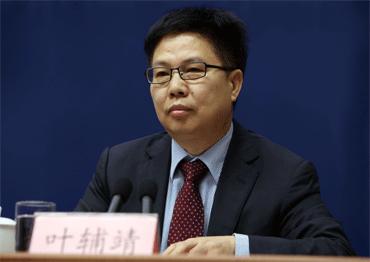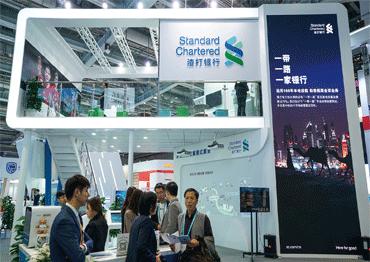ince China’s Central Economic Work Conference proposed “institutional opening-up” for the first time in 2018, the Regional Comprehensive Economic Partnership (RCEP) was signed and China applied to join the Comprehensive and Progressive Agreement for Trans-Pacific Partnership (CPTPP).
This signals a shift in China’s opening-up from goods and production factors, such as free flow of capital, land and labor, to aligning with international economic and trade rules.
In an interview with NewsChina, Ye Fujing, director general of the Institute for International Economic Research of the National Development and Reform Commission, shared his views on how China should redefine its openness and have institutional openness resonate with domestic reform. He also called on developed economies to get back to the track of globalization and deal with trade issues with China in a pragmatic way. He stressed that China should balance opening up and security to fit its own growth and make progress in fields where opening up is slower than expected.
NewsChina: How has China’s opening-up developed from focusing on goods and production factors to rule-based openness?
Ye Fujing: These two focuses complement each other and need to move forward in coordination. Also, the times have changed, and so have development conditions and demands. The focus of opening-up needs to change too.
Openness based on goods and production factors mainly decreases barriers for the flow of goods, services, capital and others, which emphasizes opening-up on the material level.
Institutional opening-up focuses on rule-based systematic changes. Simply put, it means to align with advanced international trade and economic rules, sorting out unreasonable or incompatible laws and regulations at home, and building basic institutional systems and regulatory models that are transparent and in line with international trade and investment rules. The alignment goes two ways, converging with high-level international standards while promoting China’s advanced rules on the international stage.
These two kinds of opening-up have been around for a long time, though emphasized at different periods. Previously, institutional openness mainly focused on border measures (mainly tariffs and non-tariff barriers in foreign trade). Now it’s mostly aspects within the border and docking the domestic regulatory framework with international trade and economic rules.
In fact, institutional openness has always been going along with openness based on flows of goods and production factors, including the transformation from a planned economy to a socialist market-oriented economy and the alignment with international standards like tariffs, foreign trade licenses, foreign capital utilization and intellectual property protection.
After entering the World Trade Organization, China quickened its steps toward institutional openness. For example, it sped up the legislation of foreign-related business and revised all laws and regulations inconsistent with WTO rules or the promises China made to enter the organization, guided by principles of non-discrimination, free trade and fair competition. The newly revised laws and regulations have reduced administrative licensing procedures and improved the legal system for foreign-related business operation such as trade promotion, trade remedy and foreign funds utilization. In January 2005, China canceled 424 non-tariff measures involving import quotas and licenses, further reducing tariff and non-tariff measures. Import control measures have been kept only for the sake of human safety and environmental protection according to international agreements and WTO rules. Wider market access has been available to foreign investment to create a more open, convenient and fair investment environment.
It’s worth noting that promoting rule-based opening-up does not reduce the significance of openness in goods and factor markets. Instead, it’s a change of focus. Openness for goods and production factors remains the purpose of China’s opening-up policy, while institutional openness aims to serve the upgrading of the openness in goods and factor markets.
China’s long-term focus on openness in goods and factor markets fits the country’s development at that stage. Now the situation has changed greatly. The capital shortages of the past have eased. Crossborder flow of goods and production factors has ceased to be a major problem. Meanwhile, the discordance between the opening-up of goods and factor markets and institutional opening-up is increasingly prominent. Institutional differences with other economies are bottlenecking the flow of goods and factors. Last but not least, China urgently needs to take part in newly emerging industries, business patterns and modes of trade and investment in international markets to become the creator, contributor, coordinator and leader of the new rules.
NC: What is the relationship between institutional opening-up and domestic reform?
YF: China has been opening to external markets to promote internal reform. Institutional opening-up mainly involves the alignment of domestic rules with high-level international economic and trade rules, mainly concerning State-owned enterprises (SOEs), industrial policy and subsidies, digital trade (digitally enabled transactions), labor, competition neutrality, intellectual property and market economy. The alignment is a tough part of the reform. Among China’s current rules that differ widely from international ones, some involve the fundamentals of the Chinese system, some are important tools behind China’s rapid economic growth, and some concern national security. These are all difficult to reform.
For example, China’s rules for SOEs differ from those in the West in several aspects. First, the definition of SOEs varies. Second, in the West, the commercial activities of SOEs must be under “commercial considerations” (considering factors such as price, quality and marketability). Third, there are limits on the use of non-commercial assistance (government’s financial support to SOEs based on the State ownership or control of SOEs). Lastly, there are requirements for transparency.
There are also big differences between China and international trends in subsidy rules. More subsidy sources are under scrutiny in some economies, from government to commercial banks and SOEs. More sectors are banned from receiving subsidies, from trade in goods to trade in services and foreign investment. More means of providing subsidies, including inter-SOE guarantees, are prohibited. There are also more requirements for transparency and disclosure of subsidies. Governments must prove that a subsidy does not distort trade, and face heavier penalties if found violating rules.
This all shows that institutional opening-up means domestic reform at the institutional level. The interaction between the two is more challenging and complicated. The impact of institutional opening-up on the openness of goods and production factors and overall development will be fraught with uncertainties. Everything depends on the path and social response of the reforms.

 Old Version
Old Version

